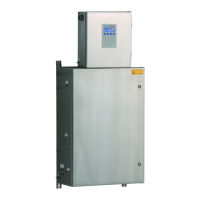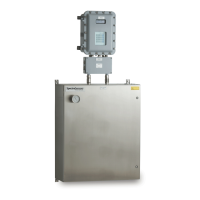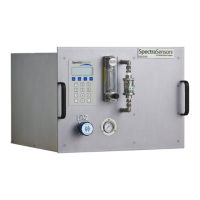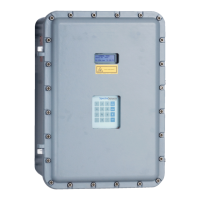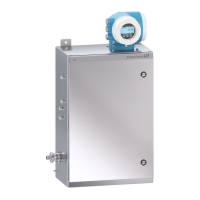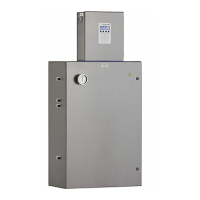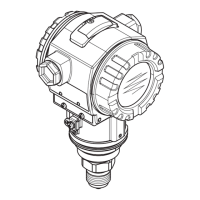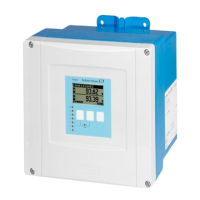Introduction
Hardware Installation and Maintenance Manual 1
–7
Figure 1–2 on page 1–7 below shows the typical raw data (in arbitrary units
[a.u.]) from a laser absorption spectrometer scan including the incident laser
intensity, I
0
(), and the transmitted intensity, I(), for a clean system and one
with contaminated mirrors (shown to illustrate the system’s relative intensity
to mirror contamination). The positive slope of raw data results from ramping
the current to tune the laser, which not only increases the wavelength with
current, but also causes the corresponding output power to increase. By
normalizing the signal by the incident intensity, any laser output fluctuations
are canceled, and a typical, yet more pronounced, absorption profile results.
Refer to Figure 1–3 on page 1–8.
3.0
2.5
2.0
1.5
1.0
0.5
Incident Energy I
0
()
Raw Signal, I()
Raw Signal, I()
(Contaminated Mirrors)
Wavelength [a.u.]
Signal [a.u.]
0.0
Figure 1–2 Typical raw signal from a laser diode absorption
spectrometer with and without mirror contamination
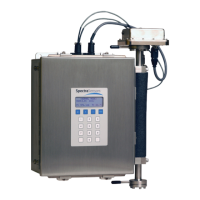
